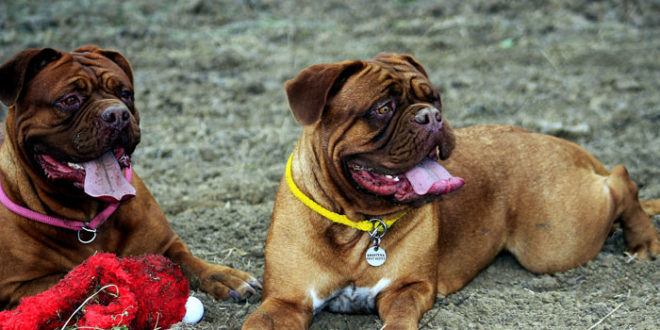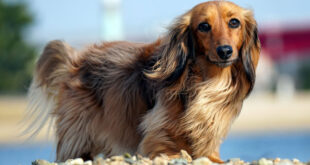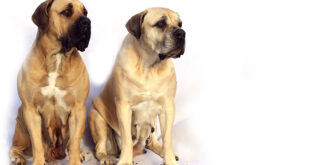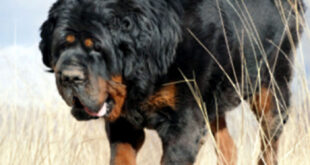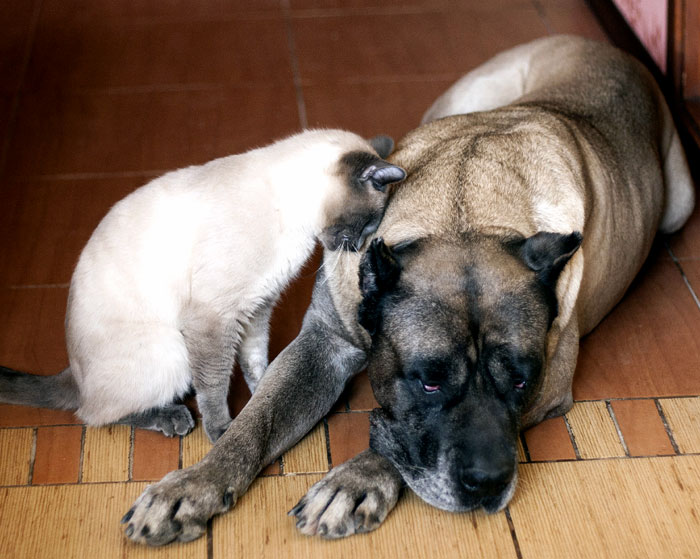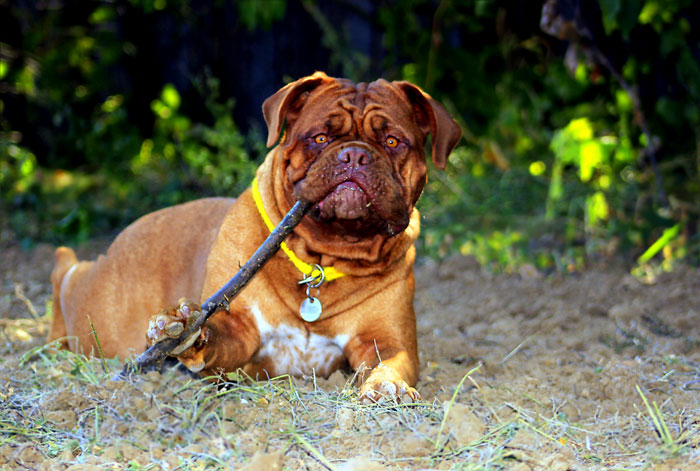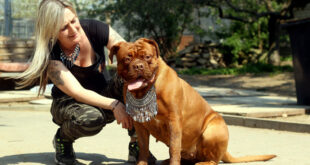Bullmastiff
A Bullmastiff is a domestic dog. It is large in size with a solid build and a short muzzle. Bullmastiff shares the traits of molosser dogs. They were originally developed by gamekeepers to guard estates. Their bloodline is derived from the English Mastiff and the Old English Bulldog (which are now extinct). They were not recognized as pureblood until 1924. Read How to care Bullmastiff Dog | Bullmastiff dog Breed information and more information about this dog.
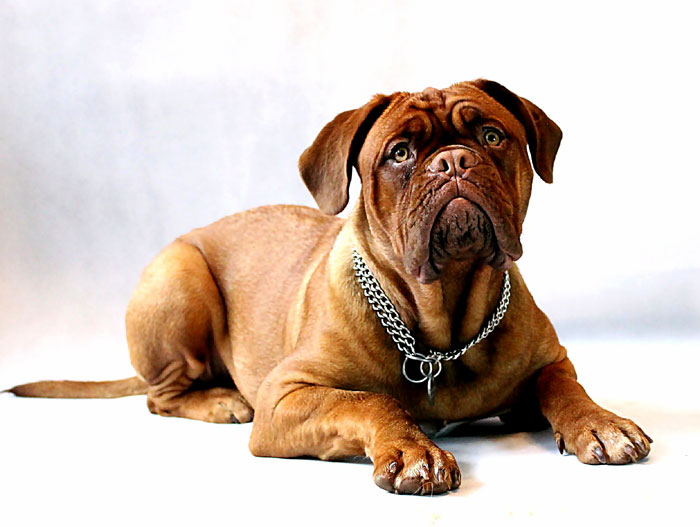
Breed information
- A male Bullmastiff can weigh from 110-130 lb (50-59kg) and can grow up to 25-27 in (64-69cm). A female Bullmastiff can weigh from 90-120 lb (41-54kg) and can grow up to 24-26 in (61-66cm).
- They have good strength, size, and speed. Bullmastiff is known as Night Dog of gamekeepers. They preferred brindle color as they could camouflage at night. De Beers, a diamond mining company imported Bullmastiffs to South Africa in 1928 to guard their mines.
- Bullmastiffs can tackle and pin a poacher that comes to their land. This is why they are very brilliant guard dogs.
- The life span of a Bullmastiff is 8-10 years.
Health care
- A Bullmastiff grows till it’s the second birthday.
- Major health concerns in a Bullmastiff include progressive retinal atrophy, bloat, hip, and elbow dysplasia. They can also have cancer and a high incidence of lymphoma and mast cell tumors.
- Bullmastiffs are prone to some genetic diseases. This includes Hip dysplasia, elbow dysplasia, entropion hypothyroidism, lymphoma, arthritis.
Hip Dysplasia
Hip dysplasia is a hereditary disease in which the thigh bone does not fit snugly into the hip joint. You may notice some signs of discomfort in a dog with this disease. Dogs with this problem should not be bred. Environmental factors can also worsen this disease.
Elbow Dysplasia
Elbow dysplasia is also a genetic problem. It may be known to be caused by a difference in the growth rates of the three bones that make up the elbow of a dog. It causes joint laxity. This can be painful but surgery can correct the disease.
Hypothyroidism
Hypothyroidism is caused by a deficiency of thyroid hormone. This disease can lead to infertility, obesity, mental illness and also lack of energy. The skin of the dog with hypothyroidism becomes tough and dark while its coat may become coarse and brittle. It can be controlled by thyroid replacement pills which should continue throughout the dog’s life.
Entropion
Entropion causes the eyelids to roll inwards which irritates and injure the eyeball. It is usually visible by six months of age. It can be controlled through surgery after the maturity age of two years.
Progressive Retinal Atrophy
Progressive Retinal Atrophy is a hereditary disease. This disease can occur to the breeds which have an autosomal dominant trait.
Cystinuria
Cystinuria is also a genetic disorder that is caused by an inability to reabsorb cystine (an amino acid) back into kidney tubules. This leads to kidney or bladder stones. Dogs with this disease should also not be bred.
Genetic problems like longhairs and Dudleys can also appear in Bullmastiffs but they are recessive and not common. The Earl of Dudley is referred to as the lack of pigment in the mask. It can be the color of the liver or it can be just not present.
Temperament
- Bullmastiffs are strong and powerful, but they are also sensitive dogs. They are firm and fearless but they have a soft corner for their loved ones.
- They need consistency to become a well-behaved member of the family.
- Bullmastiff is an independent breed, and so they need high training and socialization.
- Bullmastiffs are the natural guardians of their home and owners. They do not need any special training for guarding the house.
- Some of the activities which Bullmastiffs enjoy are obedience, agility, tracking, and carting. Read also.
How to Take Care of a Bullmastiff
- You should have a fence around your yard to prevent Bullmastiffs from roaming and to protect them from traffic. They try to expand their territory and prevent other people and dogs from entering the surrounding area.
- Bullmastiffs have a short muzzle. This makes them prone to heatstroke and heat exhaustion. Owners should avoid exercising their bullmastiff during the heat of the day. Keep them inside the house during hot or humid weather. While they are outside, ensure their access to shade and freshwater.
Training
- Start their training while they are still a puppy and at a manageable size. Teach them to socialize around other people and dogs as they can be very aggressive as they grow up.
- Send them to puppy kindergarten and regular obedience classes. Apart from this, take them to parks, shopping malls and places where they meet new people and get accustomed to new sights and sounds.
- Bullmastiffs need firm training, but they also need love and patience. You will find them caring, loyal and a wonderful companion when they are completely trained.
- They will gladly risk their lives to prevent yours.
